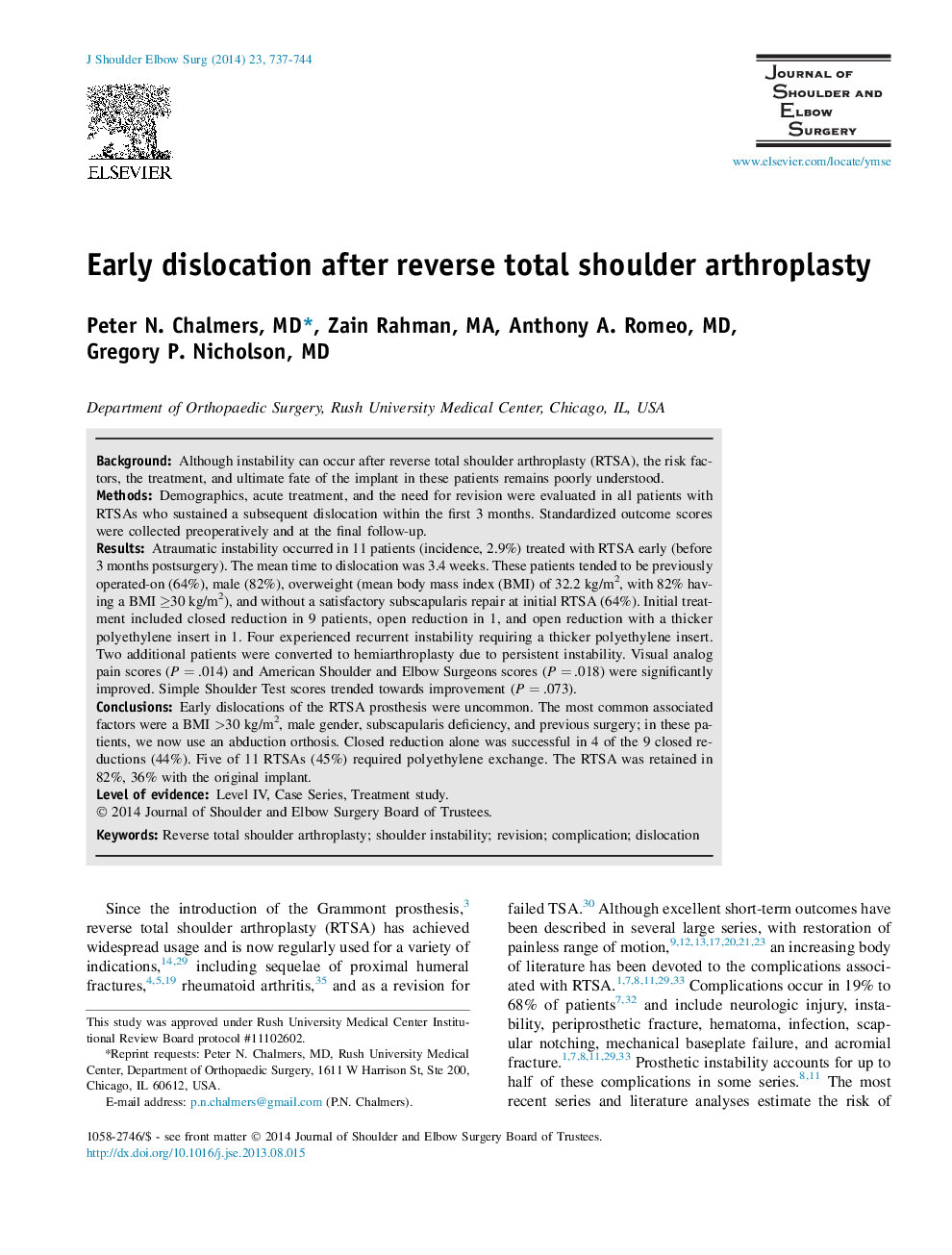| کد مقاله | کد نشریه | سال انتشار | مقاله انگلیسی | نسخه تمام متن |
|---|---|---|---|---|
| 4074436 | 1267009 | 2014 | 8 صفحه PDF | دانلود رایگان |
BackgroundAlthough instability can occur after reverse total shoulder arthroplasty (RTSA), the risk factors, the treatment, and ultimate fate of the implant in these patients remains poorly understood.MethodsDemographics, acute treatment, and the need for revision were evaluated in all patients with RTSAs who sustained a subsequent dislocation within the first 3 months. Standardized outcome scores were collected preoperatively and at the final follow-up.ResultsAtraumatic instability occurred in 11 patients (incidence, 2.9%) treated with RTSA early (before 3 months postsurgery). The mean time to dislocation was 3.4 weeks. These patients tended to be previously operated-on (64%), male (82%), overweight (mean body mass index (BMI) of 32.2 kg/m2, with 82% having a BMI ≥30 kg/m2), and without a satisfactory subscapularis repair at initial RTSA (64%). Initial treatment included closed reduction in 9 patients, open reduction in 1, and open reduction with a thicker polyethylene insert in 1. Four experienced recurrent instability requiring a thicker polyethylene insert. Two additional patients were converted to hemiarthroplasty due to persistent instability. Visual analog pain scores (P = .014) and American Shoulder and Elbow Surgeons scores (P = .018) were significantly improved. Simple Shoulder Test scores trended towards improvement (P = .073).ConclusionsEarly dislocations of the RTSA prosthesis were uncommon. The most common associated factors were a BMI >30 kg/m2, male gender, subscapularis deficiency, and previous surgery; in these patients, we now use an abduction orthosis. Closed reduction alone was successful in 4 of the 9 closed reductions (44%). Five of 11 RTSAs (45%) required polyethylene exchange. The RTSA was retained in 82%, 36% with the original implant.
Journal: Journal of Shoulder and Elbow Surgery - Volume 23, Issue 5, May 2014, Pages 737–744
